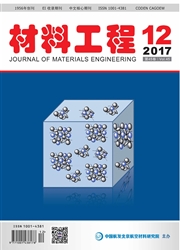

 中文摘要:
中文摘要:
基于联合动力学和高速度的火车气体动力学的火车轨道,这篇论文为高速度的火车的液体结构相互作用处理一个改进算法。在算法,在液体解答者和结构解答者之间的数据通讯被插入有关液体结构接口的负担边界联合动力学进液体动力学节目,和松驰因素的火车轨道的节目避免被介绍改进空气动力学的力量的变化和集中。与这个方法,一列高速度的火车的液体结构动力学在侧风的速度是 13.8 m/s,火车速度是 350 km/h 的条件下面被模仿。当松驰因素等于 0.5 时,空气动力学的力量的变化更低,它的集中比在另外的情况中快。方面力量和头火车的侧面的排水量在离线的模拟和合作模拟之间被比较。模拟结果证明液体结构相互作用在侧风条件下面在头火车的气体动力学和态度上有重要影响。另外,头火车的安全索引在液体结构相互作用计算以后变得更坏。因此,液体结构相互作用计算为高速度的火车是必要的。
 英文摘要:
英文摘要:
Based on the train-track coupling dynamics and high-speed train aerodynamics, this paper deals with an improved algorithm for fluid-structure interaction of high-speed trains. In the algorithm, the data communication between fluid solver and structure solver is avoided by inserting the program of train-track coupling dynamics into fluid dynamics program, and the relaxation factor concerning the load boundary of the fluid-structure interface is introduced to improve the fluctuation and convergence of aerodynamic forces. With this method, the fluid-structure dynamics of a highspeed train are simulated under the condition that the velocity of crosswind is 13.8 m/s and the train speed is 350 km/h. When the relaxation factor equals 0.5, the fluctuation of aerodynamic forces is lower and its convergence is faster than in other cases. The side force and lateral displacement of the head train are compared between off-line simulation and co-simulation. Simulation results show that the fluid-structure interaction has a significant influence on the aerodynam- ics and attitude of the head train under crosswind conditions. In addition, the security indexes of the head train worsen after the fluid-structure interaction calculation. Therefore, the fluid-structure interaction calculation is necessary for high-speed trains.
 同期刊论文项目
同期刊论文项目
 同项目期刊论文
同项目期刊论文
 期刊信息
期刊信息
